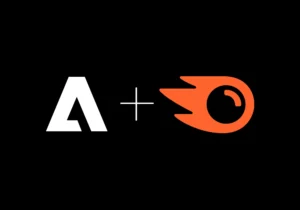Why Europe’s Defense and Dual Use Tech Companies Need CFOs Who Plan Like Generals, Not Like Startups

When a defense founder pitches to investors, the conversation often starts with technology — threat-detection accuracy, encryption architecture, sovereign-cloud isolation. But behind the slides lies a less glamorous battlefield: procurement calendars, certification delays, and cash cycles that move at the pace of institutions, not startups.
There’s a moment almost every founder in defense, dual-use, or cybersecurity encounters. They’ve secured a pilot with a government agency after a year of back-and-forth. The technology works. The team is ready. Then they discover the first invoice will be paid 90 days after milestone acceptance, and milestone acceptance may come six months after the pilot ends.
That’s the moment they realize they don’t need a growth hacker. They need a general.
Someone who understands that strategy in this sector isn’t measured in funnels, but in time, liquidity, and institutional logic.
A new CFO Insights Playbook on Cybersecurity, Sovereign Tech & Defense captures this shift in unusually candid terms: Europe’s security startups are not failing because of weak technology or insufficient demand. They’re failing because their financial planning often assumes a SaaS economy, not a sovereign one.
Defense time is not startup time
In the commercial world, speed wins. In defense, survival depends on endurance. Procurement cycles run 12–24 months, often longer. Milestones are audited. Contracts mature slowly and then pay even slower.
A founder might believe they are on track because a €3M tender is “in advanced negotiation.” A CFO with a general’s mindset knows that contract is worth zero until acceptance is signed and payment is scheduled.
This is why the Playbook treats procurement velocity as a financial KPI. It’s not a sales metric — it is a liquidity predictor, and sometimes the only one that matters.
Compliance is the new frontline
Every defense startup eventually confronts the same problem: the technology is ready long before the market is ready to buy it. Not because the buyers don’t want it, but because certifications — sovereignty requirements, NIS2 readiness, EUCC/EUCS, export controls — define eligibility before performance does.
One of the strongest insights in the Playbook is that compliance events function as valuation events. A CFO thinking like a general maps resources to these battles, not to “land and expand” slide decks.
Grants are not oxygen. They are delayed reinforcements.
Founders love grants — and for good reason. They de-risk R&D, lengthen runway, and reduce dilution. But grants also reimburse months after the money is spent, creating a false sense of security.
A growth-hacker mindset sees a grant as fuel. A strategist sees it as a delayed receivable — and plans for the cash gap accordingly. This is why the Playbook emphasizes pairing grants with short-term bridge financing or state-backed receivables facilities. Without this layer, even well-funded companies find themselves in liquidity traps.
The KPIs of a sovereign business
Investors are no longer impressed by generic SaaS dashboards. The Playbook puts forward metrics that actually predict survival in defense:
- Bid/Win Rate — credibility in the eyes of government evaluators
- Pilot-to-Framework Conversion — trust, not traction
- Burn per TRL milestone — capital discipline linked to technical progress
- Contract margin after audit — the number that determines real profitability
- Compliance-linked ARR — recurring revenue from customers that passed eligibility hurdles
A founder who cannot articulate these will struggle with any investor specializing in sovereign or dual-use technologies.
A Dual-use CFO should segregate financial data by application – clearly distinguishing costs, revenues, and projections for commercial versus government uses to avoid compliance pitfalls. Using straightforward visuals like side-by-side charts in reports can effectively highlight differences in margins, funding sources, and ROI for each use-case.
From growth hacking to command strategy
The narrative emerging from this Playbook is clear: early-stage defense companies don’t need CFOs who optimize CAC; they need CFOs who understand sequencing — when to pursue grants, when to raise equity, when to build liquidity buffers, and when to slow down burn because the next procurement window won’t open for another quarter.
This sector rewards planning, patience, and precision. It punishes improvisation. Europe’s next generation of security companies will be built by engineers and scientists — but they will be scaled by financial strategists who can also understand that in defense, the real competition isn’t another startup.
It’s the calendar.




























